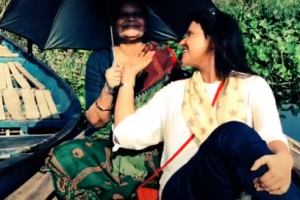A Hamas official said Sunday the Palestinian group was withdrawing from Gaza truce talks, following a deadly Israeli strike targeting a Hamas hide out that killed at least 90 Palestinians at a camp.
Another Hamas official told AFP that ‘Commander Mohammed Deif’, the Islamist group’s military chief, was ‘well and directly overseeing’ operations despite the bombing raid on a southern Gaza displacement camp on Saturday, which Israel said was an attempt to kill him.
Another senior official from the Islamist group said Hamas was pulling out of negotiations towards a ceasefire because of Israeli ‘massacres’ and repeated stalling.
The health ministry in the Gaza Strip said at least 92 people had been killed, more than half of them women and children, and 300 wounded in a strike on Al-Mawasi, an Israeli-designated ‘safe zone’ on the Mediterranean coast.
Ismail Haniyeh, Hamas’s Qatar-based political chief, told international mediators of the ‘decision to halt negotiations due to the (Israeli) occupation’s lack of seriousness, continued policy of procrastination and obstruction, and the ongoing massacres against unarmed civilians’, the official said.
But Hamas was ‘ready to resume negotiations’ when Israel’s government ‘demonstrates seriousness in reaching a ceasefire agreement and a prisoner exchange deal’, the official quoted Haniyeh as saying.
Talks mediated by Qatar and Egypt, with United States support, have for months tried but failed to bring a halt to the war.
Israeli demonstrators, sometimes in the tens of thousands, have stepped up their actions demanding the government reach a deal to free the captives taken by Hamas on October 7.
Israeli military offensive has killed at least 38,584 people in Gaza.
An Israeli security source said on Saturday that the Al-Mawasi strike showed Israel ‘will continue to target senior Hamas leadership’ even as it ‘pursues negotiations for a hostage agreement’.
Al-Mawasi, near the cities of Khan Yunis and Rafah, had in May been declared a safe humanitarian zone by the Israeli military and civilians ordered to evacuate to it. However, there have been multiple deadly incidents there blamed on Israeli strikes.
Philippe Lazzarini, head of the UN agency for Palestinian refugees, UNRWA, described the area as ‘a sandy 14-square-kilometre (5.4-square-mile) agricultural land, where people are left out in the open with little to no buildings or roads’.
‘The claim that people in Gaza can move to ‘safe’ or ‘humanitarian’ zones is false’, said Lazzarini on social media site X.
Israel’ military on Saturday said Salama, commander of Hamas’s Khan Yunis brigade, had been killed by a strike ‘in the area of Khan Yunis.’
At the site of the strike, an AFP photographer saw the charred remains of tents as Palestinians searched through the wreckage for any salvageable items.
Scott Anderson, director of UNRWA affairs in the Gaza Strip, said that on a visit to Khan Yunis’s Nasser hospital, where many of the casualties were taken, he had ‘witnessed some of the most horrific scenes I have seen’ in the war.
‘I saw toddlers who are double amputees, children paralysed and unable to receive treatment, and others separated from their parents,’ he said in a statement.
Anderson added that ‘impediments to humanitarian operations prevent us from supporting people anywhere near the scale necessary’.
The deaths in Al-Mawasi drew condemnation from governments across the region, with Egypt’s foreign ministry saying such ‘crimes… cannot be accepted under any justification whatsoever’.
Separately on Sunday, rescuers said at least eight people were killed in strikes on different parts of Gaza City, where the Israeli military said its operations were ongoing.






















